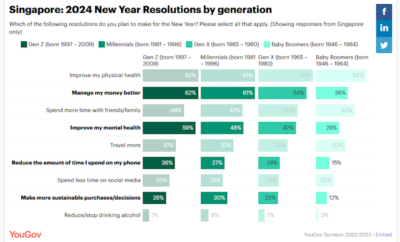
Insights + interviews
In Conversation with Zia Zaman, CEO, LumenLab
We speak with Mr Zia Zaman, CEO of LumenLab about the ‘Asiafication of Demand’, the ageing segment in Asia and preventive methods of managing health.
LumenLab – dubbed as a disruptive innovation centre for MetLife (global life insurance) – launched in Singapore in July. Zia and Lumenlab’s remit is to go beyond the traditional life and health insurance industry and become a business creation engine.

Christopher Townsend, MetLife President, Asia shared at the launch event of Lumenlab: “ Lately, innovation in the insurance industry in Asia has been incremental and, too often Western-centric. At MetLife, we believe technological, customer and socio-economic trends impacting the Asian life insurance market make it ripe for disruption.”
Lumenlab will work towards identifying intransigent problems felt by consumers across the region, focusing first on India, China, Japan, then Korea, Australia, and Bangladesh. The company is already conducting researchthat address the problems of dementia in Japan, farmer suicide in India and an ageing population in China.
At the event, Zia shared that the insurance industry needs to adjust for the increasing availability of data and offer more personalised offerings.
He shared several examples from the US where data was used to pre-empt insurance-related situations, citing Hurricane Sandy and the encouraged evacuation of customers as well as and Angelina Jolie’s decision to undergo preventative double-mastectomy surgery. Zia terms these as examples of ‘usage-based’ life insurance.
The Active Age (TAA): What do you see in Asia and specifically Singapore, as advantages that will help drive LumenLab forward?
Zia Zaman (ZZ): Asian markets are some of the most dynamic in the world, with fast-changing economic landscapes and fierce competition. So much so, that the demand curve is bending towards Asia. This ‘Asiafication of Demand’ means it is becoming increasingly important for financial products and services to represent and cater to the Asian way of life.
After conducting a review with the help of its consulting partner, MetLife selected Singapore ahead of Hong Kong, Shanghai and Seoul as its chosen destination for the lab. The reasoning was the availability of a public-private partnership, access to innovation talent in Singapore, and the representative demographic makeup of Asia all in one island city.
Collaboration opportunities and technological infrastructure also played an important role in the decision making process.
TAA: What do you think the ageing segment, in Asia, will look like over the next 5 to 10 years?
ZZ: The ageing segment will undoubtedly grow markedly this coming decade but perhaps more importantly, we will take a more granular view on various ageing subsegments and will develop perhaps a needs-based segmentation rather than strictly a demographic segmentation.
Agers are diverse.
As such, it is important to identify what are the pain points that are currently felt by large groups of the population and what solutions can we devise that they would be willing to pay for. Note that we are not focusing on government policy or other economic interventions such as subsidies or philanthropy to act as payers; we believe that a solution must be compelling enough for the end-user, in this case, the ager, to pay for.
The only way to get there is to develop deep empathy for the ageing and to build specific solutions that address their acute pains, both figuratively and literally.
TAA: On healthcare, what’s your opinion regarding preventive applications vs. extension of treatment?
ZZ: There is strong evidence to suggest that we’re at an inflection point and the majority of innovation will shift to preventative methods to improve health outcomes. In the grand sweep of human history, we have been reactive and seeking a better understanding of ailments and pathologies in an attempt to get well again.
Once we develop a deep enough understanding of the cause of future ailments, we reach a tipping point where effective measures taken while one is well, will have a more lasting impact on health outcomes than the measures one takes when one gets sick.
Given this emphasis on prevention and the advent of personalised tools and digital technologies, LumenLab foresees a massive innovation spike, led by non-healthcare players.
TAA: Can you share examples – perhaps in the areas of dementia research or ageing populations – that LumenLab is seeking to introduce?
ZZ: We continue to identify agers’ actual ‘jobs-to-be-done’ that are areas where they will spend money to accrue some value.
These are more elemental than one might think and includes: a sense of belonging, ageing gracefully with glow, delaying the onset of disease incl. dementia, not being a burden, and sharing intergenerational stories. Each of these ‘jobs-to-be-done’ has at least one incubated project against it.
TAA: What is your opinion about Asia’s changing demographic and cultural landscape regarding the aging population for e.g. longer lifespans, cultural norms, movement of labour towards capital cities, increase in access to medical care, etc?
ZZ: Much has already been written about all these topics, so I don’t want to just contribute my voice to the chorus.
Rather, I would reiterate that as the long-tail causes of our deaths are eliminated, the top seven reasons become more prevalent.
By tackling each individually, we may make quantum leaps in improvement that extend lifespan at a rate heretofore unseen. If this minority scenario plays out, we could have life-spans of 150+ for a quarter of our population, changing the economics of care and work so dramatically that we will need to rethink how we as Asians organise and live to include the ageing in our lives.









